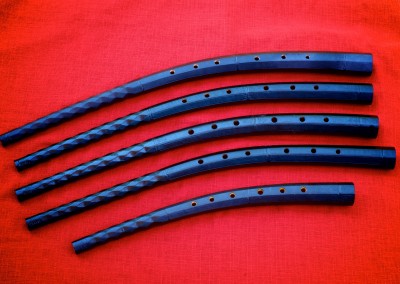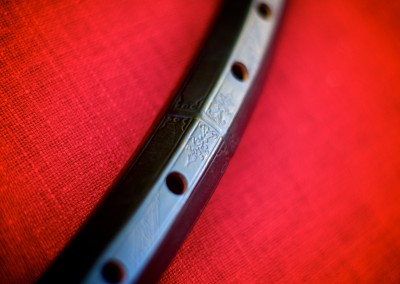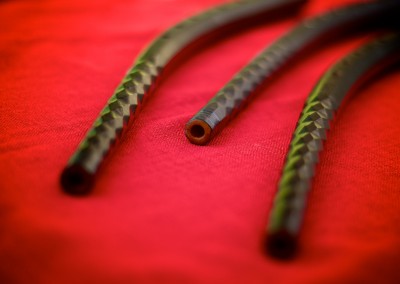Curved cornetts
My curved cornetts are directly inspired by the historical cornetts kept in the Philarmonic Academy of Verona and in the Kunsthistorisches Museum of Vienna.
All my cornetts are hand-made. I use fruit wood (pearwood, applewood, service tree, plumwood), yew, maplewood or boxwood. As far as possible, I choose natural (animal or plant) and local materials.
Each instrument is made of two cored-out halves glued together. The joint is reinforced by four hemp ties. Once oiled, the cornett is covered with lamb or veal parchment dyed in black after a midieval recipe.
Nowadays, cornett players use different kinds of material. The cornett’s tuning and ergonomics, together with the shape and size of the mouthpiece, are very different from one player to another, in order to suit one’s morphology, technique or musical asthetics.
I think it’s important to fit all these parameters for each cornett player, so that playing the cornett turns out to be the most easy (or the less difficult ?) as possible. Nevertheless, I produce a suggested “standard compromise” which will be convenient for most players and for beginners. I can also make mouthpieces of virtually any shape according to the demand.
Let me point out that one same instrument can be seen (or heard) quite differently according to who blows it, and with which mouthpiece. This is why, as far as possible, I like to adjust a cornett with its future owner, and revoice the instrument if necessary after playing it in for a while.
I can build soprano cornetts and cornettini in any pitch, as well as instruments that would transpose down a tone (or alto cornetts).
Taking care of your cornett will be explained on [this page], and basic explanations on tuning it on [this one].
Don’t hesitate to contact me for any request (adding keys, decoration, colour, aspect, shape, wood…)


